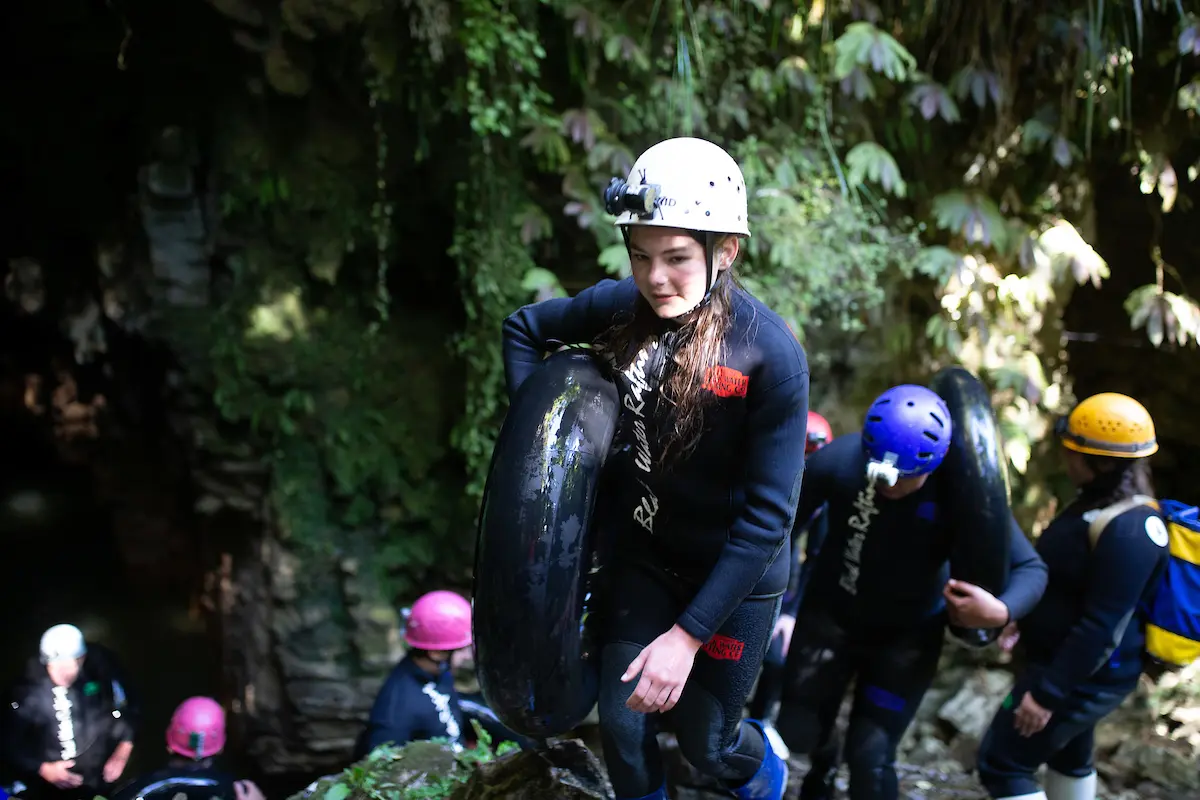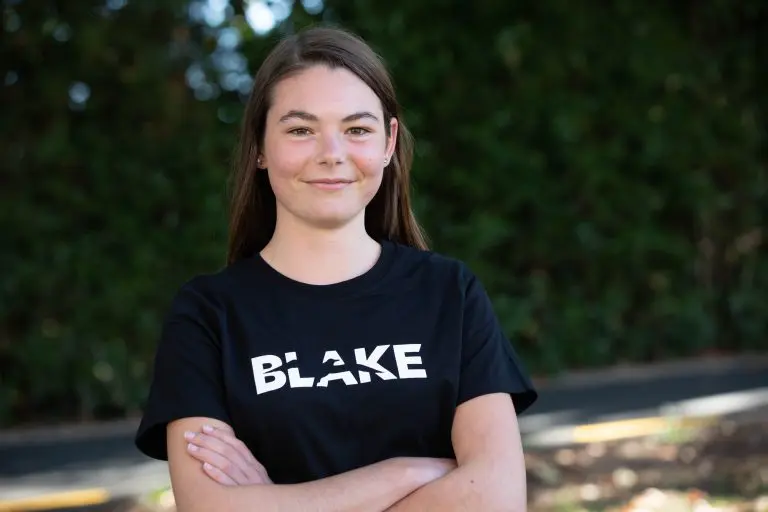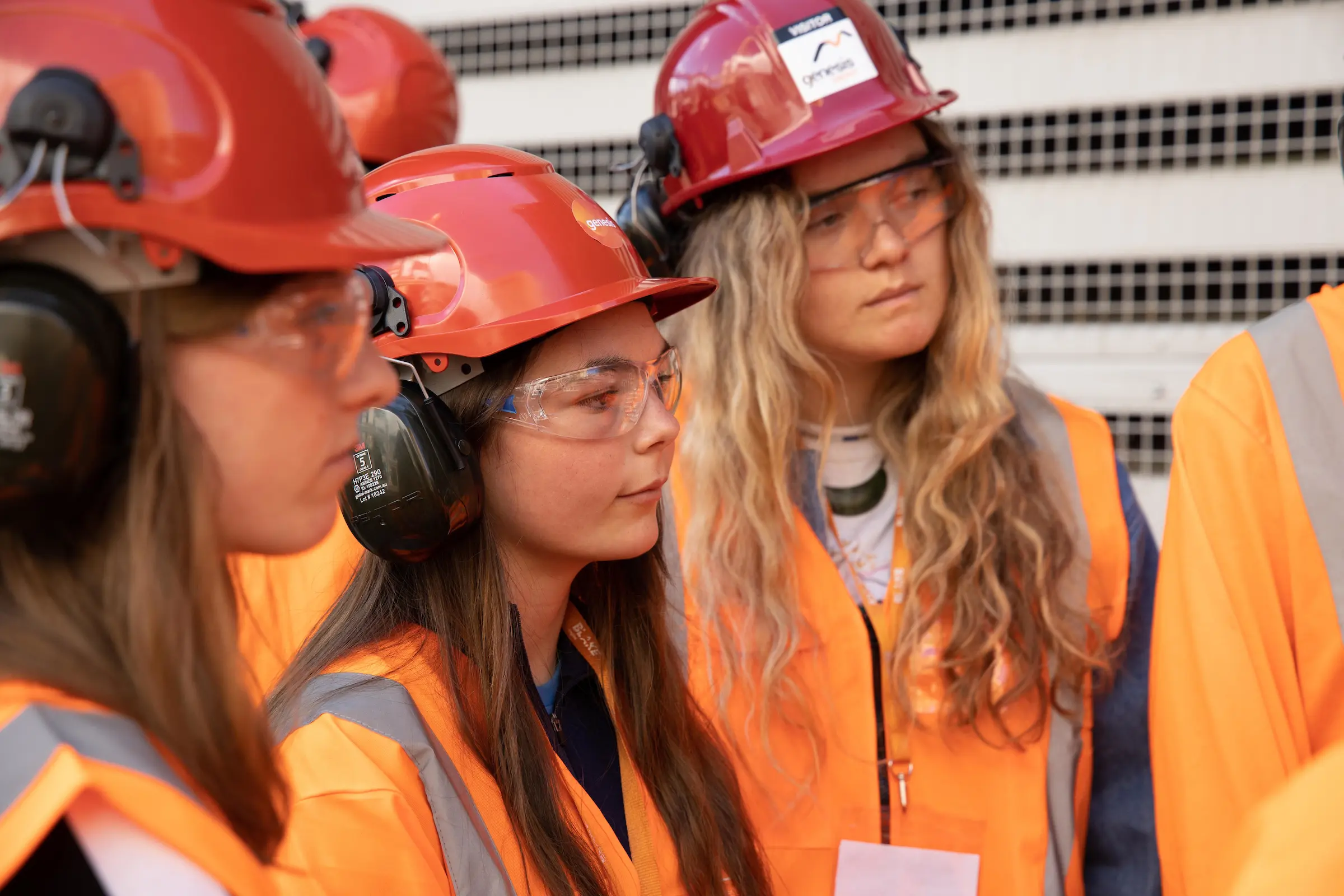BLAKE Inspire delegate Mahina Walle has the privilege of living within the country’s first nature reserve. Now she wants to protect the marine life around it, she tells Suzanne McFadden.
She’s just 16, but Mahina Walle has set herself an ambitious environmental goal – to help create a marine reserve around her home of Hauturu o Toi/Little Barrier Island.
She revealed her plan of action at the BLAKE Inspire annual forum (previously known as YELF) in the Waikato, where she was one of 56 secondary school students passionate about the environment wanting to make change.
During the week of experiential learning and leadership development, student delegates spent time with environmental leaders, scientists and experts in the field, while developing their individual action plans to start working on when they returned home.
Mahina is the daughter of the Department of Conservation’s resident rangers on Hauturu o Toi, and wants to achieve her plan by 2030, with the help of several interested groups. She sees it as her role to bring them all together.
Hauturu, a 2817 hectare island on the outer edge of the Hauraki Gulf, is New Zealand’s oldest nature reserve, formed with some foresight back in 1895. DoC calls it the “jewel in the crown for conservation”. But the waters around it have no protection.
Even in the eight years that Mahina has lived on the island, helping her parents and visiting researchers with scientific and conservation work, she’s seen the sea life change. A keen snorkeller, she’s watched as overfishing has impacted on the island’s marine ecosystem.
“There are healthy pockets of fish, but then there are kina barrens, which are caused by overfishing of snapper and crayfish,” says Mahina.
A kina barren occurs with the overfishing of predators that can break into kina with their strong jaws. Without those predators, the kina population grows out of control, and they in turn eat all of the kelp forest, leaving only bare rocks. Without the kelp, there isn’t a nursery for small fish, so the cycle continues to worsen.
Mahina, who with her younger brother Liam is home schooled, recently spent a couple of days at the Poor Knights Islands, a marine reserve off Northland’s east coast. “When we first arrived, massive schools of trevally and snapper came right up to the boat. The huge number and biodiversity of species there was amazing,” Mahina says.
“Seeing the contrast made me even more inspired to try to get marine protection around Little Barrier Island. In general, the marine ecosystem is relatively healthy, but a marine protection area would prevent more overfishing and allow species to regenerate.
“Hauturu is already a nature reserve, so the coastline doesn’t have any agricultural run-off, and a marine protection area would create an intact ecosystem from the land to the sea.”
She admits it’s a substantial and ambitious project to tackle in a little over a decade, but she knows she has support in numbers.
“There are already several groups interested, so I’m currently trying to create an initial brainstorming meeting with those groups so we can exchange ideas,” she says.
Among them are local iwi, Ngti Manuhiri, who are kaitiaki (guardians) of the nature reserve, rangers from DoC and the Hauturu Supporters Trust, who are already interested in protecting the marine environment around Little Barrier Island.
Her 14-year-old brother – an avid spear-fisherman and boat builder – is already involved. Last year, Liam wrote to Prime Minister Jacinda Ardern and Conservation Minister Eugenie Sage voicing his concern about the increased number of kina barrens around the island.
“One of the challenges might be getting everyone together,” Mahina says. “Once people are working on this together it will be much more effective than just one person or several groups trying to do it alone.”
“The marine environment around New Zealand is not as protected as the land. There’s less than 0.5 percent of our ocean protected, which is crazy considering what we do to it,” she says.
Last month, a report card on New Zealand’s biological diversity revealed that only 0.4 percent of New Zealand’s marine and coastal areas are covered by 100 percent ‘no-take’ marine reserves.
DoC is responsible for the implementation, management and monitoring of New Zealand’s 44 marine reserves. Cape Rodney-Okakari Point Marine Reserve, the country’s first marine reserve created in 1975, is not far from Hauturu.
Mahina has lived all her life on island reserves. Before the family moved to Hauturu, her parents, Richard Walle and Dr Leigh Joyce, were rangers on Maud Island Scientific Reserve in the Marlborough Sounds.
They met at Okarito on the West Coast, home to thousands of native birds. Richard was working for DoC restoring the oldest building on the West Coast, while Leigh was studying kiwi. She’s now the DoC kākāpo scientist on Hauturu.
There are only five human residents living fulltime on Hauturu, and through her unique island life, Mahina has spent a lot of time learning from environmental researchers and scientists.
“If something really interesting is happening on the island, it’s fantastic to be able to go out and help,” she says. “The awesome thing about living out here is that I get to help out heaps of researchers, and experience a lot of amazing things.”
A Year 12 student, she learns through Te Aho o Te Kura Pounamu, the national correspondence school. Her parents have always offered her the chance to go to school on the mainland, but she’s chosen to stay on Hauturu – an exceptional classroom in itself.

Mahina is also an entrepreneur, making her own brand of natural creams and moisturisers. “I started this small initiative called Swooping Tūī last year, but I’ve been creating these products for my family since I was six,” she says.
“I did an English assignment on menstruation issues in third world countries, and thought it was crazy how many girls can’t even go to school because they’re having their period.”
So now she puts all of her profits from her beeswax-based products into donating menstrual cups to girls in need. So far she’s donated 12 eco-friendly cups, which also reduce waste. “Each cup prevents 300kg of menstrual product waste in its lifetime, so that’s 3600kg less waste already,” she says.
Spending time with 55 other young people at BLAKE Inspire was an enlightening experience for Mahina.
“It was awesome catching up with young people who have similar ideas and interests, exchanging ideas and seeing what they plan on doing. That was really inspirational as well” says Mahina, who’d like to be an ornithologist or an environmental lawyer.
“The most interesting thing I learned is that small changes are important, but we also need to be making big changes as well. Our whole mentality needs to change.”
She considers it a privilege to live within such a remote and pristine sanctuary. “I think it’s amazing being surrounded by a very heathy ecosystem,” she says. “I consider this to be normal. So when I got to the mainland and see weeds and hardly heard any bird song, I think that’s not how New Zealand is meant to be.
“It inspires me to want to make more places like this.”



